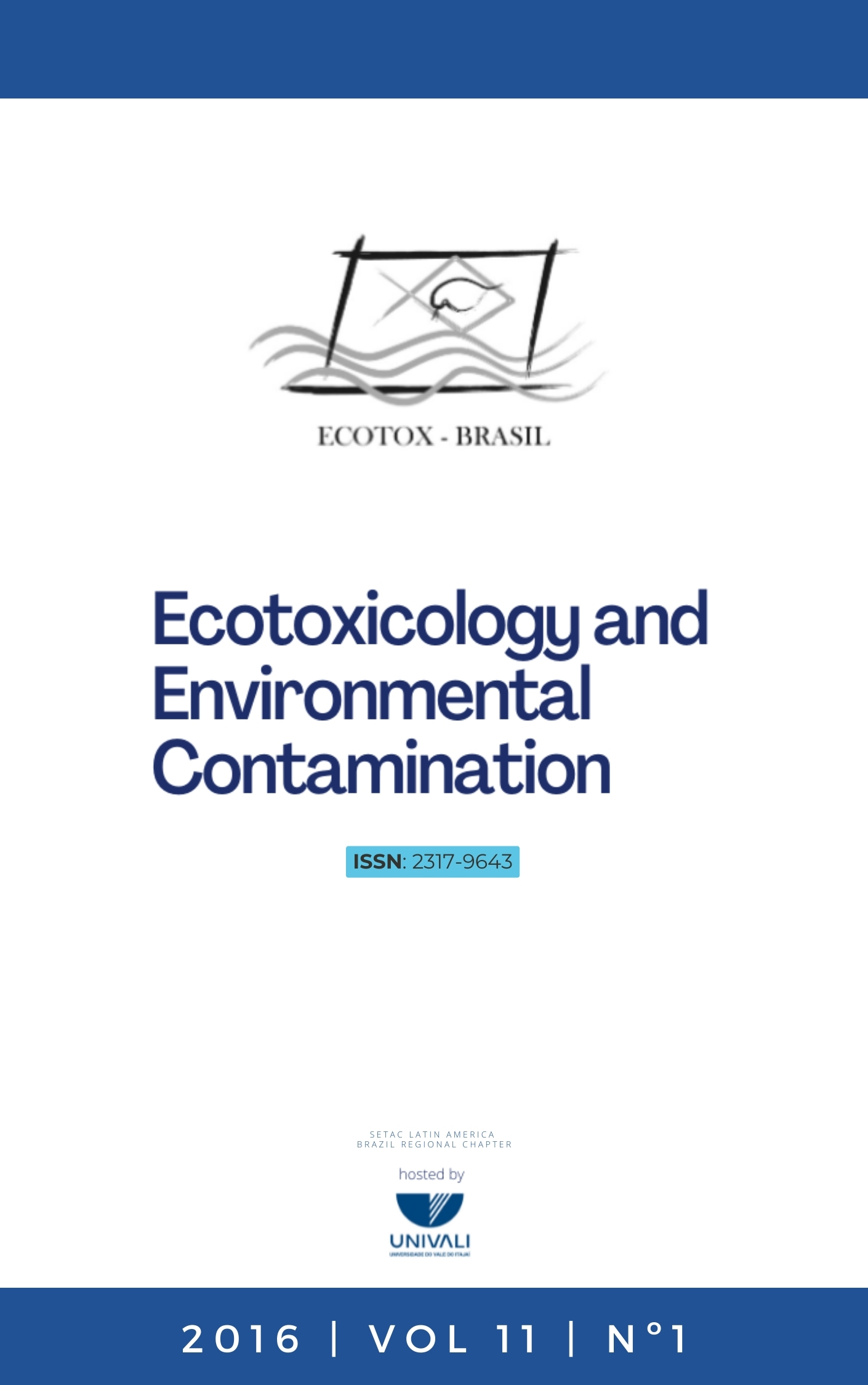Branchiura sowerbyi Reared in Two Sediments for Ecotoxicological Bioassays
DOI:
https://doi.org/10.5132/eec.2016.01.02Keywords:
peat extract, coconut fiber, oligochaete, artificial sedimentAbstract
The present work compared the survival, growth, and reproduction of Branchiura sowerbyi reared in natural sediment and in artificial tropical sediment (composed of sand, clay, and coconut fibers). The artificial tropical sediment, in the tested composition, appeared not to be suitable for conducting bioassays with this species, since the results showed a high mortality of the juveniles and low reproduction of adults as compared to those observed for the natural sediment.
Downloads
Published
How to Cite
Issue
Section
License
Copyright (c) 2016 Ecotoxicology and Environmental Contamination

This work is licensed under a Creative Commons Attribution 4.0 International License.
Copyright © 2006 ECOTOX-Brasil
Copyright notice: It is a condition for publication that manuscripts submitted to this journal have not yet been published and will not be simultaneously submitted or published elsewhere. By submitting a manuscript, the authors agree that copyright for their article is transferred to the Sociedade Brasileira de Ecotoxicologia (ECOTOX-Brasil) if and when the article is accepted for publication. The copyright covers the exclusive rights to reproduce and distribute articles, including reprints, photographic reproductions or any other reproduction of a similar nature, including translations. No part of this publication may be reproduced, stored in a retrieval system or transmitted in any form or by any means, electronic, mechanical, photocopying, recording or otherwise, without permission of the publisher.
Notice: While every effort is made by the EEC, editors and editorial board to see that no inaccurate or misleading data, opinions or statements appear in this journal, they wish to make it clear that the contents of the articles and advertisements published herein are the sole responsibility of the contributors or advertisers concerned. Accordingly, the EEC, the editorial board and editors and their respective employees, officers and agents accept no responsibility or liability whatsoever for the consequences of any inaccurate or misleading data, opinion or statement.








